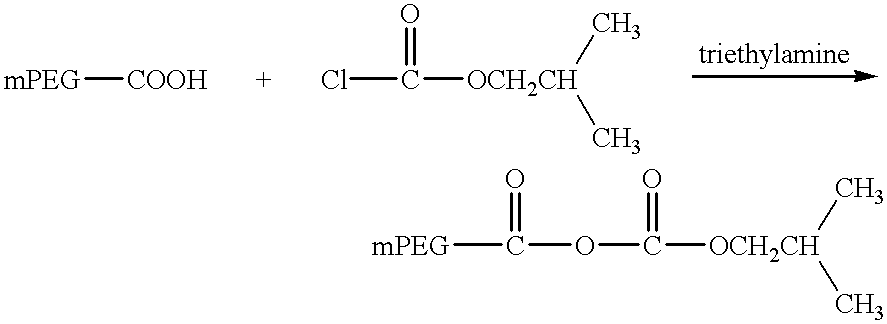Single-chain antigen-binding proteins capable of glycosylation, production and uses thereof
a single-chain antigen and glycosylation technology, applied in the direction of immunoglobulins, peptides, drugs, etc., can solve the problems of cyanuric chloride, non-specific reactivity and non-retention of sca polypeptides in tissues
- Summary
- Abstract
- Description
- Claims
- Application Information
AI Technical Summary
Benefits of technology
Problems solved by technology
Method used
Image
Examples
example 1
Synthesis of Asn-linked Glycosylation Sequences in CC49 / 218 and Expression of the Glycosylated SCA
The CC49 monoclonal antibody was developed by Dr. Jeffrey Schlom's group at Laboratory of Tumor Immunology and Biology, National Cancer Institute. It binds specifically to the pan-carcinoma tumor antigen TAG-72 (see, Muraro, R., et al., Cancer Res. 48:4588-4596 (1988)). The SCA gene version of CC49 has been described by Milenic et al., Cancer Res. 51:6363-6371 (1991). Oligonucleotide-directed mutagenesis was employed to create Asn-linked glycosylation sequences in CC49 / 218 (the 218 linker is described in the "Detailed Description of the Preferred Embodiments" section, supra), as shown in the DNA sequences presented in FIGS. 1A and 1B (i.e., (1) two V.sub.L changes; (2) two V.sub.H changes; (3) one linker change; (4) one C-terminal change). Oligonucleotide-directed mutagenesis was also employed to create two or three tandem or overlapping glycosylation sites in CC49 / 218. Additionally, mu...
example 2
Synthesis of Asn-linked Glycosylation Sequences in Other SCAs
Using the methods described in Example 1, oligonucleotide-directed mutagenesis is employed to create Asn-linked glycosylation consensus sequences in the identified loop regions of a Kabat consensus V.sub.k I / 218V.sub.H III SCA, C6.5 / 218 SCA, and A33 / 218 SCA, as shown in FIGS. 6-8, respectively (i.e., (1) two V.sub.L changes; (2) two V.sub.H changes; (3) one linker change; (4) one C-terminal change; or (5) combinations thereof). In V.sub.k I / 218V.sub.H III SCA and C6.5 / 218 SCA, proline residues flanking the tripeptide sequence in the +3 position are changed to alanines, as recommended by the compilation of Gavel, Y., and von Heijne, G., Protein Engng. 3:433-442 (1990). Amino acid assignments of the Kabat consensus V.sub.K I / 218V.sub.H III SCA and A33 / 218 SCA are according to Kabat et al., Sequences of Proteins of Immunological Interest, pp. 108 & 331, 5th ed., U.S. Dept. Health and Human Services, Bethesda, Md. (1991), wher...
example 3
Purification of Glyco-CC49
The Pichia cells were harvested from a fermenter and centrifuged at 5000 rpm for 40 minutes. The clarified medium was collected and filtered through a 0.22 um filter. The sample was dialyzed against water with a membrane of molecular weight cut off of 3500 to a final conductivity of less than 1 mS. A cation exchange column (Poros-HS) was equilibrated with 15 mM Tris-Acetate at pH 6.15. The sample was adjusted to pH 6.2 and loaded onto the column. Glyco-CC49 was then eluted out with a salt concentration of 0.15 M NaCl in Tris-acetate buffer pH 7.4. It was then passed through a Poros-HQ column equilibrated with 0.15 M NaCl. Tris-acetate buffer pH 7.4. The flow through material was then processed on a size exclusion column (Pharmacia, Superdex-75). The fractions corresponding to a molecular weight of 25-35 kDa were collected.
PUM
| Property | Measurement | Unit |
|---|---|---|
| pH | aaaaa | aaaaa |
| pH | aaaaa | aaaaa |
| pH | aaaaa | aaaaa |
Abstract
Description
Claims
Application Information
 Login to View More
Login to View More - R&D
- Intellectual Property
- Life Sciences
- Materials
- Tech Scout
- Unparalleled Data Quality
- Higher Quality Content
- 60% Fewer Hallucinations
Browse by: Latest US Patents, China's latest patents, Technical Efficacy Thesaurus, Application Domain, Technology Topic, Popular Technical Reports.
© 2025 PatSnap. All rights reserved.Legal|Privacy policy|Modern Slavery Act Transparency Statement|Sitemap|About US| Contact US: help@patsnap.com



